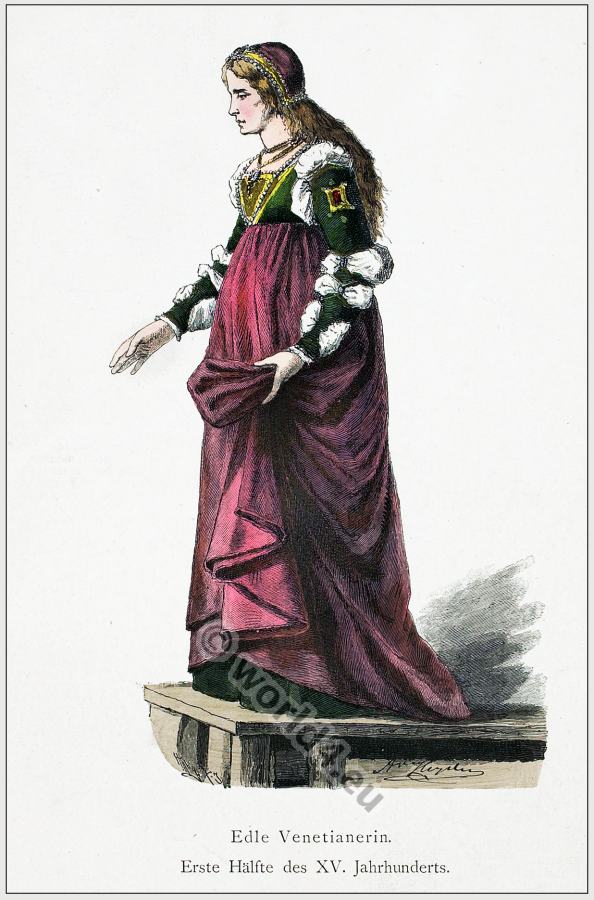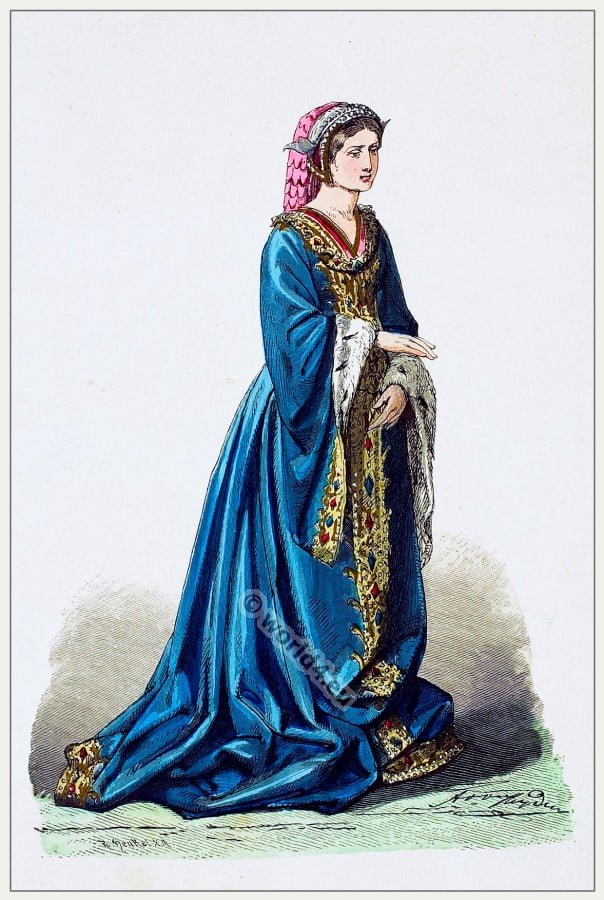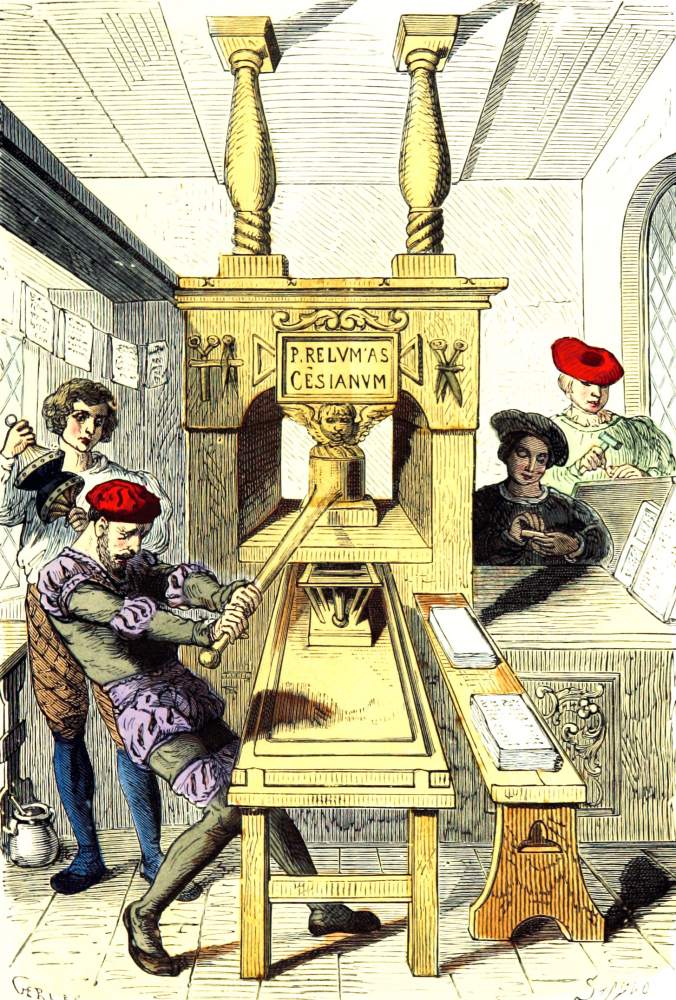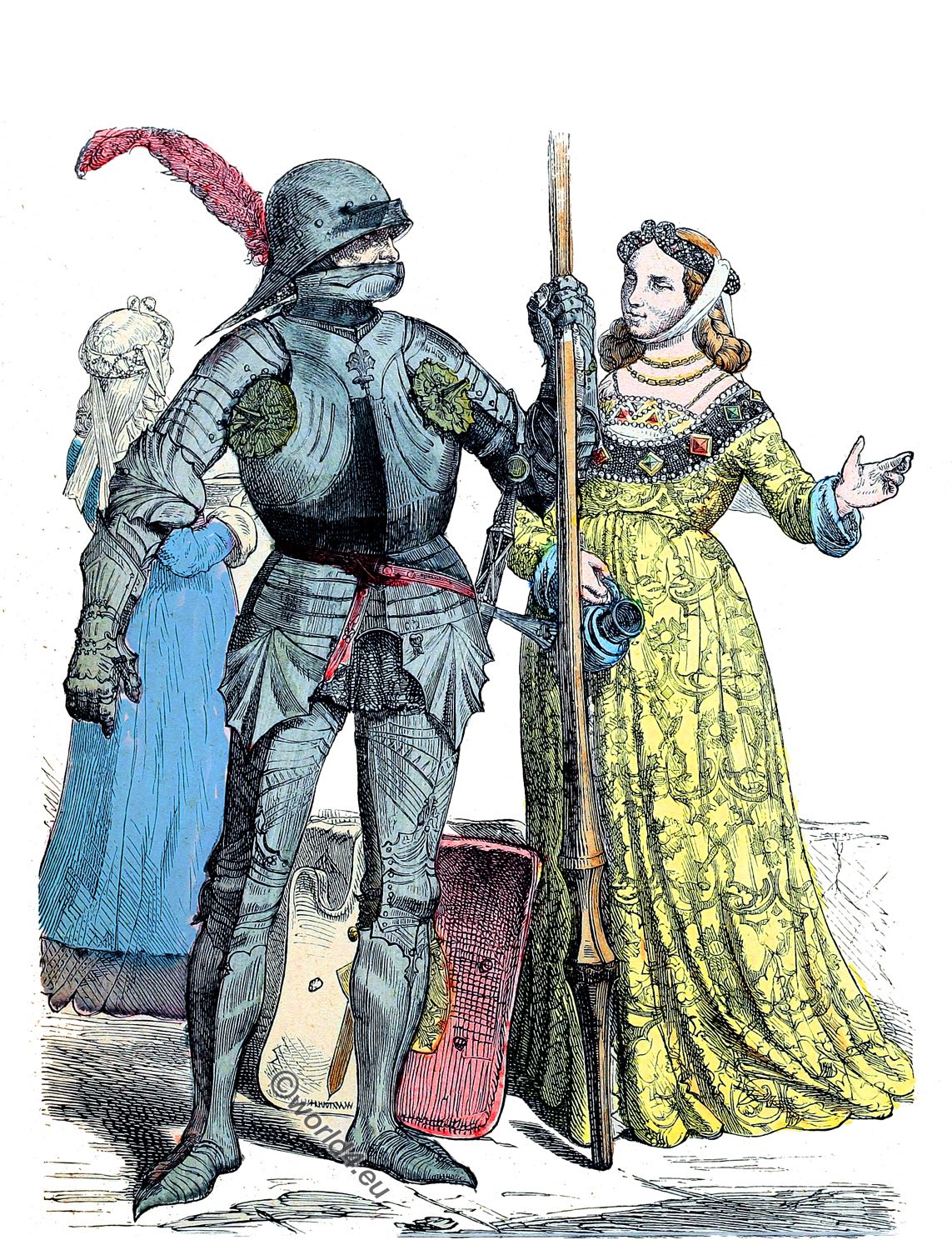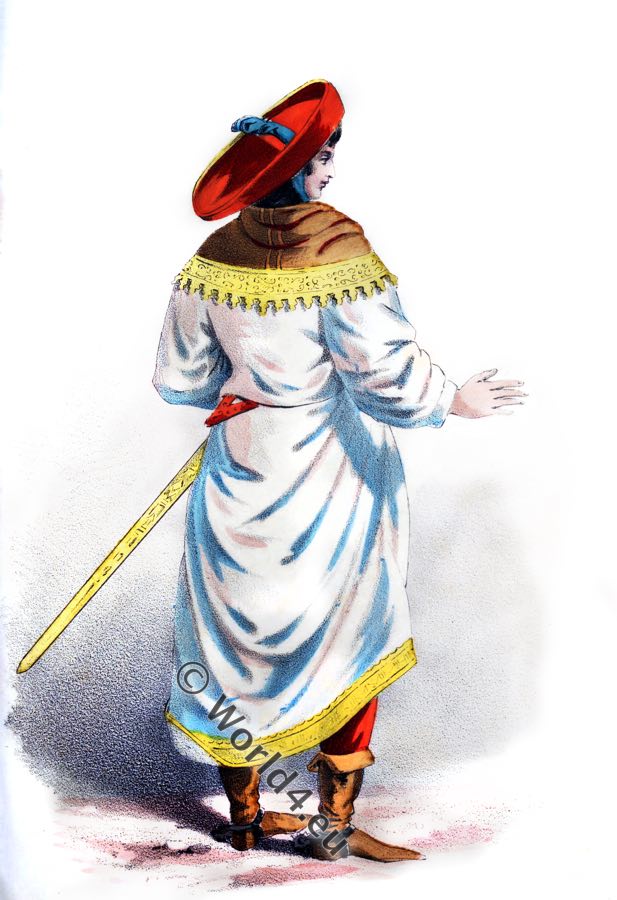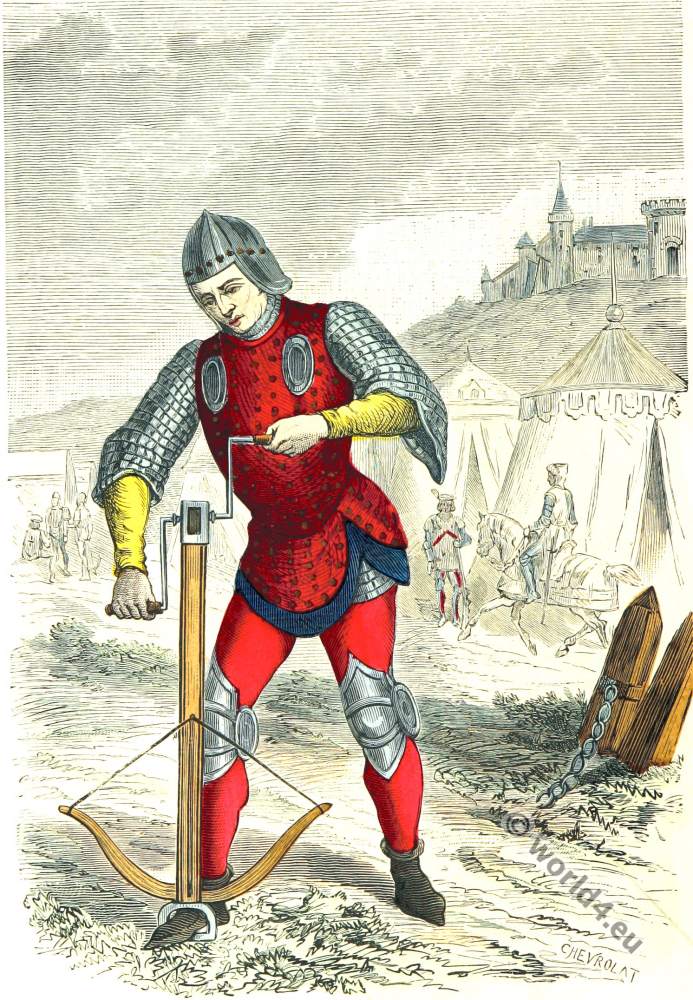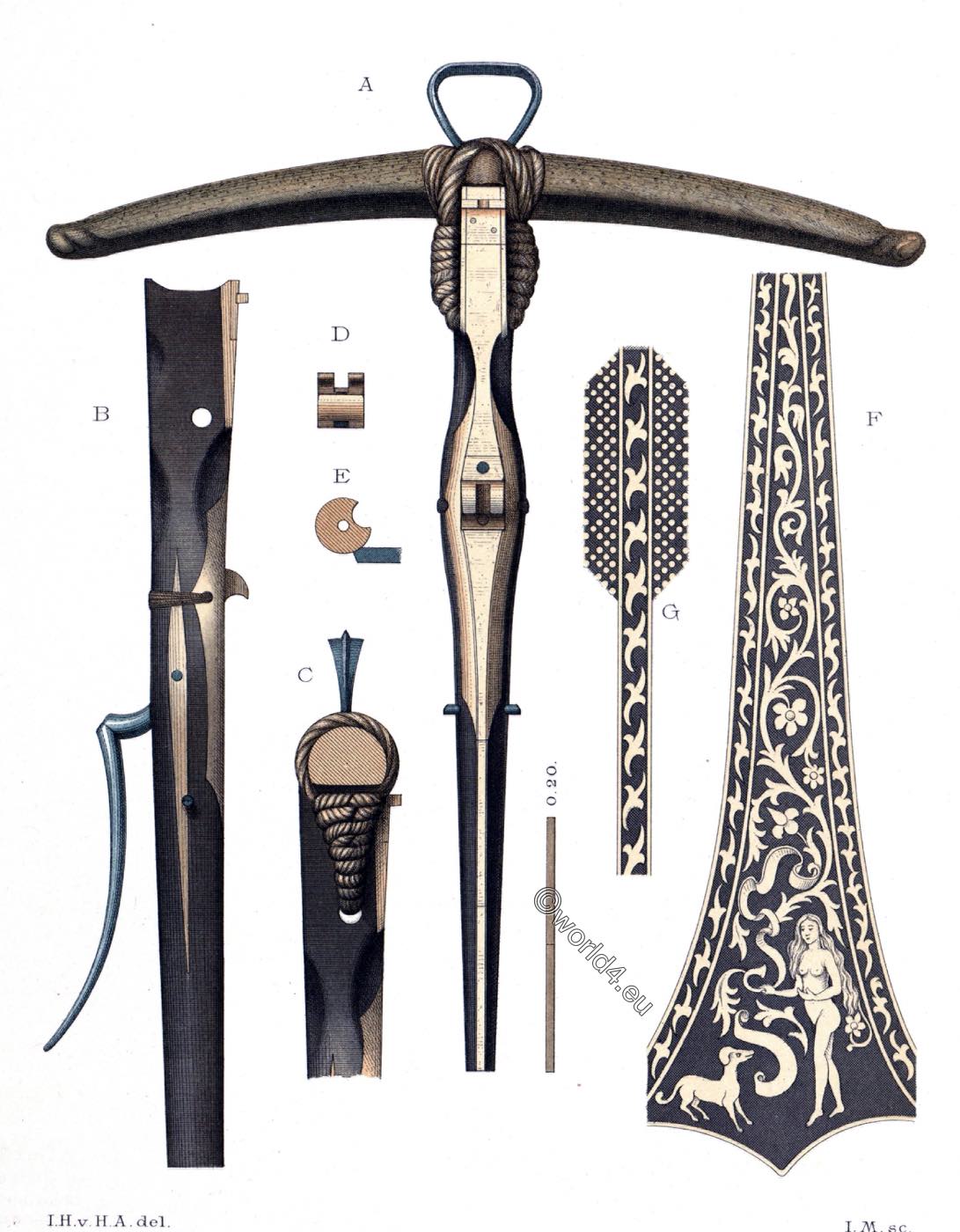
Crossbow with fishbone bow of the 15th century. Germany Middle ages.
15th century crossbow. It comes from Hohenaschau Castle in the municipality of Aschau in the Chiemgau region on the Bavarian-Tyrolean border, which was owned by the Baron of Freiberg.
This type of crossbow was also called foot bow, because it has a stirrup at the front of the bow, into which a man entered with his foot when tensioning with the windlass; in the lower part of the shaft, iron pins protrude on both sides, on which the winch to be used got its hold.
The strong bow consists of fish bones that are often folded together. Usually such crossbows have the steel bow, and it is assumed that in the summer time more of the latter was used, but for the winter time, as it jumped easily in too cold weather, such fishbone bows were chosen. These fishbone bows are still bendable on all crossbows that have survived, whereas originally they certainly had a far greater elasticity and thus a strong penetrating power. With the original bowstring we did not find such bows anymore.
Under B we show the side view of the shaft of this crossbow, also called the frame; C the upper part of the shaft also in profile with the arch on top of it, which is also shown here in cross section. Both in the crossbows with steel bows and in those with fishbone bows, the bow was never attached other than with braided ropes, as we see under A from the front and under C from the side. The cords had a certain elasticity, without which the bow would have burst the shaft.
The cylindrical nut of staghorn, which forms the hook in which the bowstring is hooked, is shown under D, seen from the front; one can see above the incision in which the arrow was jammed with its lower end and the iron-lined opening in which the lever engaged.
E gives in the profile a part of the iron trigger, which holds back the nut with the tensioned bowstring. B is the extended trigger. When the follower touches it, the follower is unhooked with leverage and the bowstring sets the arrow in flight with full force. This nut does not have an iron axis, but rather strings are drawn through its centre, which can be seen in both total view A and side view B.
The outside of the bow was always covered with birch bark, on which there was an ornamentation in white on a black background. Strangely enough, this ornamentation is exactly the same on all crossbows of this type that we have seen so far; since this bow painting is no longer completely preserved on the present specimen, we are giving parts of it in original size after a well-preserved crossbow that is in the princely collection at Sigmaringen.
The ornament F appears in the same way on the rounded upper part of the arch, so that the female figure with a dog, probably representing the Roman goddess of hunting Diana, appears at both ends. On the flat underside of the bow, the ornament G appears in a strip along the length of the bow; all other parts of the bow are dotted white on a black background, one part of which also appears at G.
Source: Traditional costumes, works of art and tools from the early Middle Ages to the end of the eighteenth century, after simultaneous originals by Dr. J. H. von Hefner-Alteneck. Published by Heinrich Keller. Frankfurt a. M. 1879-1889.
Related
Discover more from World4 Costume Culture History
Subscribe to get the latest posts sent to your email.

